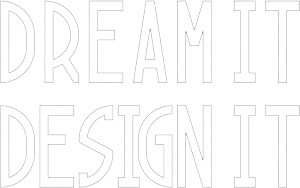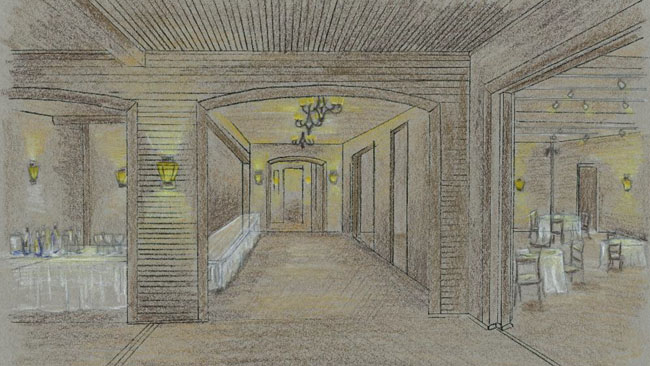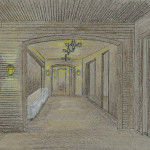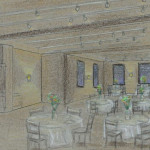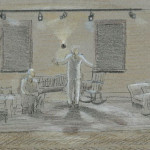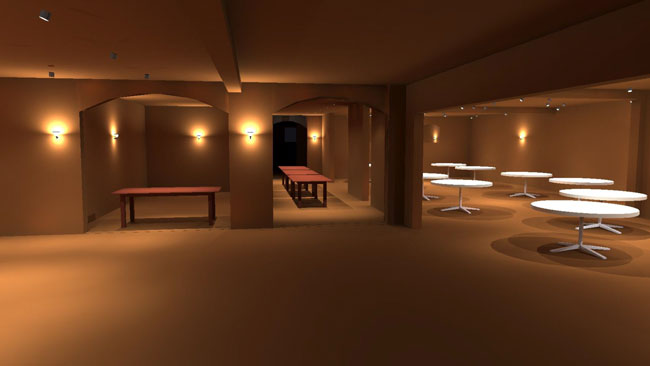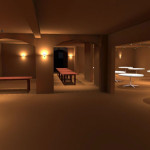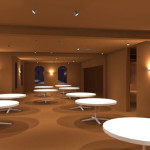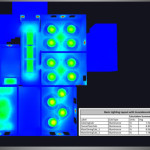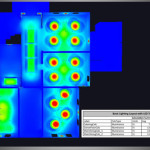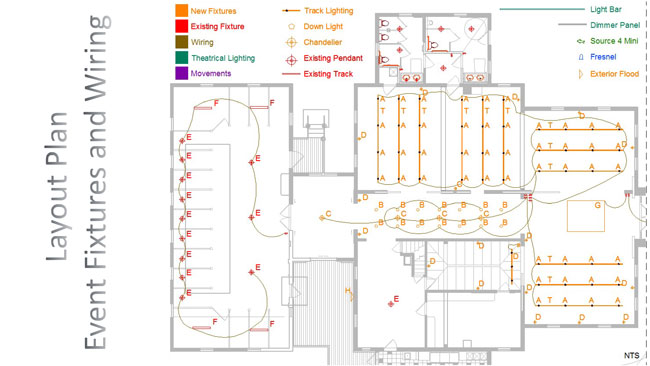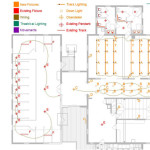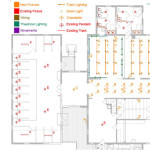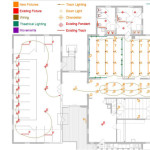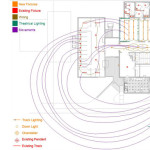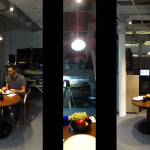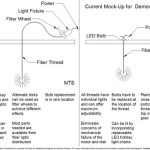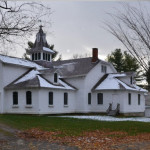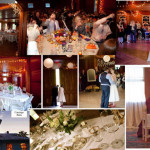During my first semester studying at the LRC, our class was approached by Vermont’s Park McCullough to design lighting proposals for their carriage house. Some functional lighting had already been installed and weddings as well as small theatrical performances had been hosted in the vintage space. The owners envisioned having a beautiful, elegant, versatile space that would host both frequent weddings and events, but would also offer a professionally lit theatrical space. For the wedding lighting, the central hall where buffets are usually arranged is lit with a row of time period chandeliers and hidden point sources to put a sparkle on the service. The wing that usually holds the reception tables receives rows of recessed, dual track lighting to blend in with the original wood paneled ceiling. This is to give ultimate flexibility to the wedding planner and bride to arrange the tables where ever they desire and to have the lights still highlight the place settings. The fixtures proposed for the track system include spotlights to highlight the table and specialty lights to complement the decor. By having a track system, the wedding planner can either chose some of the fixture sets owned by Park McCullough or bring their own specialty fixtures and connect them to universal track connectors. The dual track system allows for the specialty lights to be dimmed separately from the spotlights on the table. The opposite wing is usually split into two areas. The space near the door serves as a dance floor and is lit using a similar track system. The other half acts as the bar. The door way of the bar space also has a track to highlight the drinks available. The back wing of the building can serve as a bridal boudoir or anything else the bridal party might want. The space utilizes the beautiful original horse stables as dressing rooms. The original hanging lights from the main spaces find a new life with one fixture lighting each stall. The short track lights at the end of the ballroom wing are used to light the rest of the back wing. The side porch and loading dock are lit with a solar, motion activated flood light.
When the space is acting as a theater, the track lighting acts as house lights. There are light bars hung by the exposed beams in the ceiling and control boxes flush mounted in the ceiling. These lighting systems are arranged in most of the spaces to allow for various seating arrangements. The light fixtures proposed for the lighting of shows utilizes mini source fours that are small enough to virtually disappear. The space directly within the entryway has the remnant of a hay-drop. The ceiling now has a fully enclosed, recessed space with wood paneling. I designed a light art installation to fill this void and add a dynamic entrance. The installation uses fiber-optics to create floating, twinkling points like enchanting fireflies on a warm summer evening. The fiber-optics would also have hidden images to allow for different celebration patterns to appear when wanted. By using fiber-optic strands, when turned off, the fixture would virtually disappear. Having all of these systems integrated into the same control system provides maximum versatility.
Professor: Jennifer Brons
Partner: Charlie Jarboe
Software: AGI, AutoCAD, Illustrator
